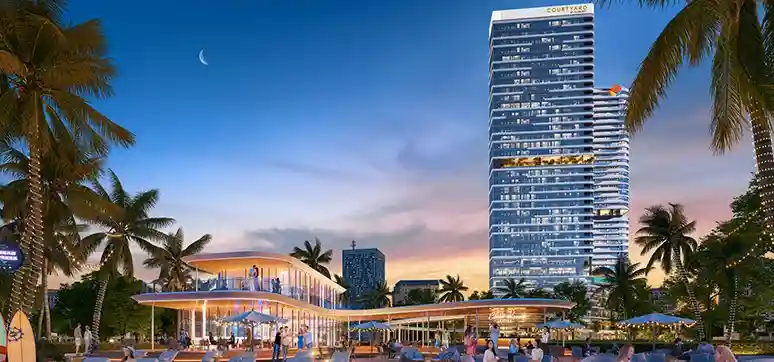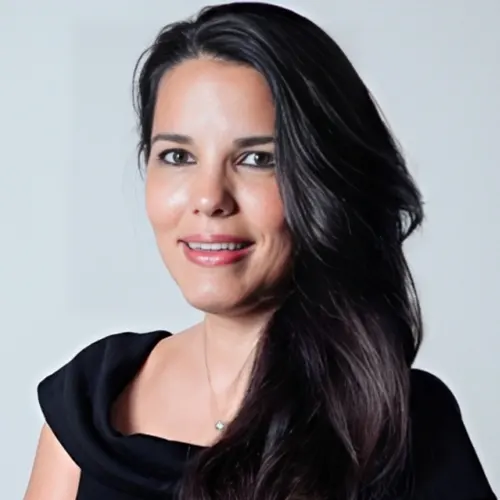Please tell our readers about your design practice.
Studio3eight is formed by an award-winning team. It is an international architectural practice that harnesses the power of design to create exciting and innovative built environments. Our practice is a melting pot of global perspectives and diverse experiences, with offices in Dubai, Australia, and Vietnam.
As a forward-thinking design studio, we are passionate about pushing the boundaries of traditional architecture and embracing new technology and sustainable practices. We believe in creating buildings that not only respond to their surroundings but also inspire and connect with the people who use them.

Our team of talented architects and designers are experts in their field, and their passion for creativity, innovation, and excellence is evident in every project we undertake. From concept design to project delivery, we are committed to delivering exceptional design solutions that exceed our client’s expectations. At Studio3eight, we believe that architecture has the power to shape the world around us. We are dedicated to creating buildings that not only look beautiful but also serve a greater purpose, whether it’s creating vibrant communities, enhancing the natural environment, or shaping the future of our cities.
Could you please tell us about your journey in the field?
My journey in the field of architecture has been an exciting one, full of diverse experiences and opportunities to work with talented professionals from around the world. I was born in Cuba and later moved to Spain to pursue my studies, where I earned my Master’s in Architecture and received the Award for Academic Excellence for Best Graduate University Students from the Spanish Government in 2009.
Since then, I’ve had the privilege of working on a wide range of projects in countries such as Germany, Spain, the United Kingdom, India, and China. During my time in Asia, I was honored to receive the 40 under 40 Best Designers award in 2018, which was a significant milestone in my career. After spending over five years working with the Vietnam team, I decided to move to Dubai, where I established studio3eight’s UAE office. This has been an exciting chapter in my journey as an architect, and I’m grateful for the opportunities and experiences that have brought me to where I am today.
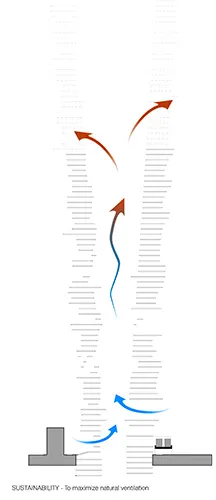
How did you think of becoming an architect?
I have always had a passion for drawing and a love for mathematics. When it came time to decide on a career path, I knew that I wanted to find something that would allow me to combine both of these interests. Architecture seemed like the perfect fit, as it involves both technical and artistic elements. I was fascinated by the idea of creating something that could be both functional and beautiful, and I knew that architecture would allow me to do just that. I love the idea of designing spaces that people can live, discover and work in, and I find it incredibly rewarding to see my designs come to life.
What do you enjoy most about your profession?
What I enjoy most about my profession is the opportunity to see my designs come to life. It’s incredibly rewarding to work on a project from the initial concept stage through to the final construction phase, seeing it evolve and take shape along the way. I find it especially fulfilling to connect interior and exterior spaces in my designs, where the architecture and landscape speak the same language. Creating spaces that are both functional and beautiful and that people can enjoy and experience, is what I strive for in my work.
Of course, there are challenges that come with any project, such as balancing the needs of different stakeholders and navigating complex regulations and codes. But ultimately, seeing a design come to fruition and become a space that people can use and enjoy is what makes it all worthwhile. Overall, I feel fortunate to work in a profession that allows me to express my creativity, solve complex problems, and create spaces that positively impact people’s lives.
How do you go about choosing materials for the façade and cladding?
Selecting materials for the exterior of a building is a critical decision that can greatly impact the final outcome of a project. For me, every façade is a unique challenge, and I approach each one with a passion for creating new architectural forms and buildings that bring something unique and exciting to the cities. When choosing materials for a façade or cladding, I consider a variety of factors, such as the location, climate, building function, and aesthetic goals. I also work closely with different consultants and partners to explore different options and find the best solution for each project.
For instance, we usually collaborate with a structural façade engineer and to ensure that the materials are durable enough to support the building’s weight. Similarly, I may work with a sustainability consultant to ensure that the materials are environmentally friendly and energy-efficient. Or light designers to enhance our design ideas. Ultimately, my goal is to create a façade that is not only functional and durable but also visually stunning and unique. By working closely with my team and partners, we can find the right materials and design elements to bring our vision to life.
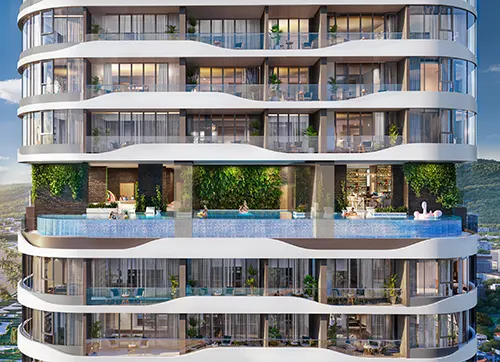
What do you think is the role of a façade in the sustainability enhancement of a building?
The role of a façade in the sustainability enhancement of a building is crucial. The façade plays a significant role in a building’s energy efficiency, as it is the primary barrier between the interior and exterior environment. One of the key ways in which the façade can contribute to sustainability is by optimising thermal performance. This involves using materials that can help to reduce heat gain and loss, thereby reducing the energy required for heating and cooling. For instance, high-performance insulation materials, such as mineral wool or foam, can be used to reduce the amount of heat that escapes through the façade.
Another way in which the façade can contribute to sustainability is by incorporating passive design strategies. These strategies aim to reduce the building’s reliance on mechanical heating and cooling systems, by maximising the use of natural light and ventilation. For example, the façade can be designed to allow for natural ventilation or to provide shading to reduce solar heat gain.
The façade can also incorporate active sustainable technologies, such as photovoltaic panels or solar shading systems, to generate renewable energy and further enhance the building’s energy efficiency. Overall, the façade plays a critical role in the sustainability enhancement of a building. By optimising thermal performance, incorporating passive design strategies, and incorporating active sustainable technologies, we can create buildings that are not only beautiful but also environmentally responsible and sustainable.
Please tell us about your favorite projects in which you were involved. Please share their façade & fenestration design details.
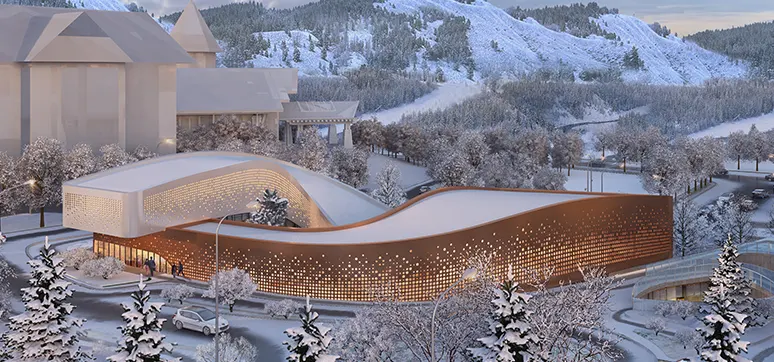
Certainly, I’d be happy to provide some details on the façades of some of my favourite projects: One of my favourite projects that we are currently working on at Studio3eight is the Green Diamond development. This is a prime location for a multi-residential, mixed-use project that has sustainability and amenity at the forefront of its design. Our team focused on incorporating biophilic design elements to create a natural buffer against noise, heat, wind, and to enhance privacy. The result is a community that is surrounded by dense vegetation, offering a pleasing and nature-inspired vista both inside and outside the building. It’s a project that showcases our commitment to creating sustainable and innovative designs that prioritise the well-being of both the environment and the community.
In the Chongli Exhibition Center and Olympic Plaza projects in China, while working at GroupGSA, we utilised perforated panels to create a unique and eye-catching design. The panels were arranged in various patterns and configurations to allow for natural light and air circulation. The result was a striking and functional façade that not only enhanced the building’s aesthetic appeal but also contributed to its energy efficiency. In the Huangyao Ancient Town Resort project, we focused on creating an environmentally friendly and sustainable façade. We used wooden panels as the main element of the façade, which not only added warmth and texture to the design but also reduced the building’s carbon footprint. The wooden panels were locally sourced and treated using non-toxic materials, further contributing to the building’s sustainability.
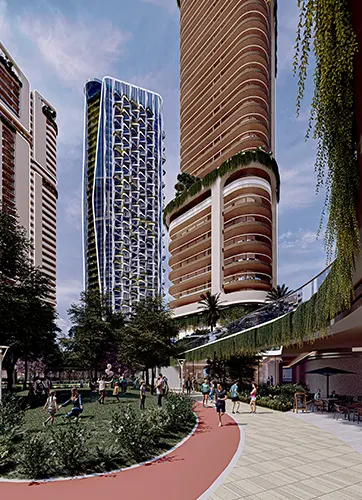
At the Grandeur Do Son Resort in Vietnam, the façade was also a key element of our design. We utilised a combination of glass, and metal panels to create a visually striking façade that provides natural ventilation and shading. In the Centara Quy Nhon and Ngo May Marriott Hotel projects in Vietnam, we utilised a range of materials and design elements to create unique and functional façades. The Centara Quy Nhon façade features a combination of glass and metal panels, while the Ngo May Marriott Hotel façade incorporates natural materials and glazing. Both façades were designed to provide natural light, ventilation, and shading, while also enhancing the buildings’ aesthetic appeal.
Another exciting project I was Design lead while at Sure Architecture was a conceptual proposal for a mixed-use high-rise development in London that included residential, commercial, and public spaces. The design was based on the concept of an “endless city,” with a continuous loop of public spaces and gardens that wrapped around the building’s exterior, providing a seamless transition between indoor and outdoor spaces. The building’s façade was designed to be both functional and visually striking. Unfortunately, the project was ultimately not realised, but it remains one of my favourite projects to have worked on due to its innovative design and ambitious vision.
Currently, At Studio3eight, we are working on a high-rise office and service apartment building in Tran Phu, Vietnam. While I can’t reveal too many details yet, I can say that the façade will incorporate innovative design elements and sustainable features to create a visually stunning and environmentally responsible building.
Where is the architectural industry heading (globally or in the country where you work)?
Globally, the architectural industry is heading towards a more sustainable and technologically advanced future. With the increasing awareness of the impact of buildings on the environment, there is a growing demand for sustainable design practices and energy-efficient buildings. Many architects are also exploring the use of new materials and technologies, such as 3D printing and parametric design, to create innovative and efficient designs. In the UAE, where I am currently based, there is a strong focus on innovation and sustainable design, with the government investing heavily in new technologies and green initiatives. The UAE has set ambitious targets for reducing carbon emissions and increasing renewable energy, which is driving the architectural industry towards more sustainable and environmentally friendly designs and that is what we are focusing on at Studio3eight.
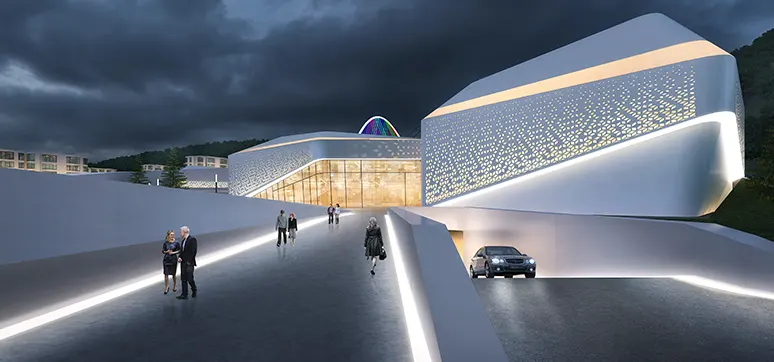
In Vietnam, where we are working on major hospitality projects, the industry is also rapidly growing and evolving. The country is seeing a boom in tourism, and as a result, there is a high demand for new and innovative hospitality projects. Overall, the architectural industry is constantly evolving, driven by changing technologies, environmental concerns, and shifting social and economic trends. We; as Architects and designers, need to stay up-to-date with the latest trends and technologies and those who are willing to embrace change and innovation are likely to thrive in this dynamic and exciting field.
What is your take on sustainable buildings?
Sustainable buildings are designed and constructed with the goal of reducing the negative impact on the environment, improving the health and well-being of occupants, and optimising the use of resources. At Studio3eight Architects and Designers, we are committed to creating sustainable buildings, and we work daily to ensure that our designs incorporate eco-friendly materials and practices, are energy-efficient, and incorporate renewable energy sources.
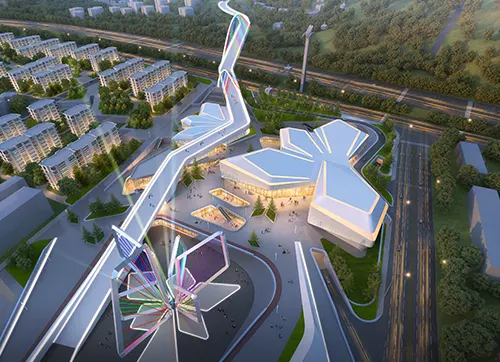
There are many benefits to sustainable buildings, including reduced energy costs, improved indoor air quality, and a smaller carbon footprint. They can also provide a healthier and more comfortable living and working environment for occupants. As the global focus on sustainability continues to grow, sustainable buildings are becoming increasingly important. Many countries are implementing green building standards and regulations, and there is a growing demand for sustainable building practices from both consumers and the industry.
How do you go about choosing the fenestration material and architectural hardware for your projects?
Choosing the right material and architectural hardware for a project is a crucial decision that requires careful consideration. At Studio3eight Architects and designers, we approach this process with several factors in mind. First, we consider the aesthetic and functional requirements of the project, as well as the client’s preferences. For example, we consider factors such as the desired level of natural light, ventilation, and sound insulation. We also consider the architectural style and overall design of the building and select materials and hardware that complement these features.
Next, we consider the durability, maintenance, and cost of the materials and hardware. We aim to select materials and hardware that are durable and low-maintenance, to reduce long-term costs and ensure the longevity of the building.
Finally, we prioritise sustainable and eco-friendly options whenever possible. We look for materials and hardware that are energy-efficient and made from sustainable materials, such as recycled or reclaimed materials. Overall, our approach to selecting fenestration materials and architectural hardware is a balance between aesthetic, functional, and practical considerations, with a strong emphasis on sustainability and durability.
What is your vision for 2030? What kind of cities would you like to see?
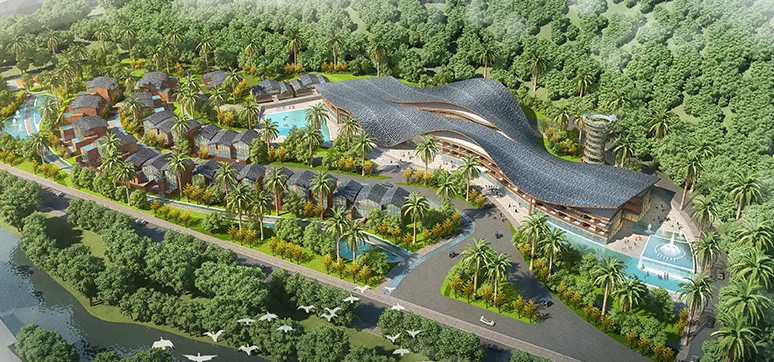
My vision for 2030 is to see more cities around the world focused on sustainable development, where architects, designers, and engineers work together to create buildings and spaces that minimise their environmental impact. I believe that net-zero carbon cities will be the future, and it is important for us as architects to lead the way in designing and constructing buildings that are energy-efficient and utilise renewable resources. In addition, I would like to see cities that prioritise walkability, bike-ability, and public transportation to reduce the reliance on cars and decrease traffic congestion and air pollution. Community spaces, parks, and green areas should also be key elements of city design, providing opportunities for people to connect with nature and each other.
As an architect, my vision for 2030 is to continue to push the boundaries of design and technology, while keeping sustainability at the forefront of every project. At Studio3eight Architects and Designers, we are committed to creating buildings and spaces that are both beautiful and sustainable, and we will continue to work towards this goal in the years to come.
One piece of advice you would like to give aspiring architects?
I would suggest aspiring architects gain practical experience by working on real-life projects and collaborating with other professionals in the industry. It is important to be open-minded, flexible, and willing to learn from others. Networking and building relationships with clients, contractors, and suppliers can also help to build a successful career in architecture.
